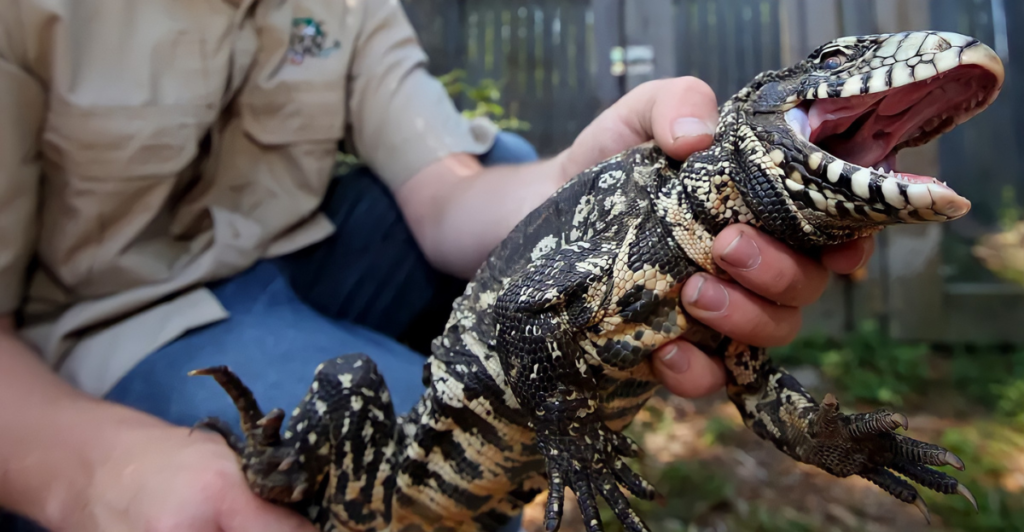
A new threat has emerged in the Florida Keys, and wildlife officials are deeply concerned. The Argentine black and white tegu lizard, an invasive species with a voracious appetite and ability to adapt to various environments, has been spotted in the area, raising alarms about the potential ecological damage it could inflict. While these reptiles aren’t harmful to humans, they do defend themselves with their tails and sharp teeth when they feel threatened or cornered.
Understanding the Reptile Invader
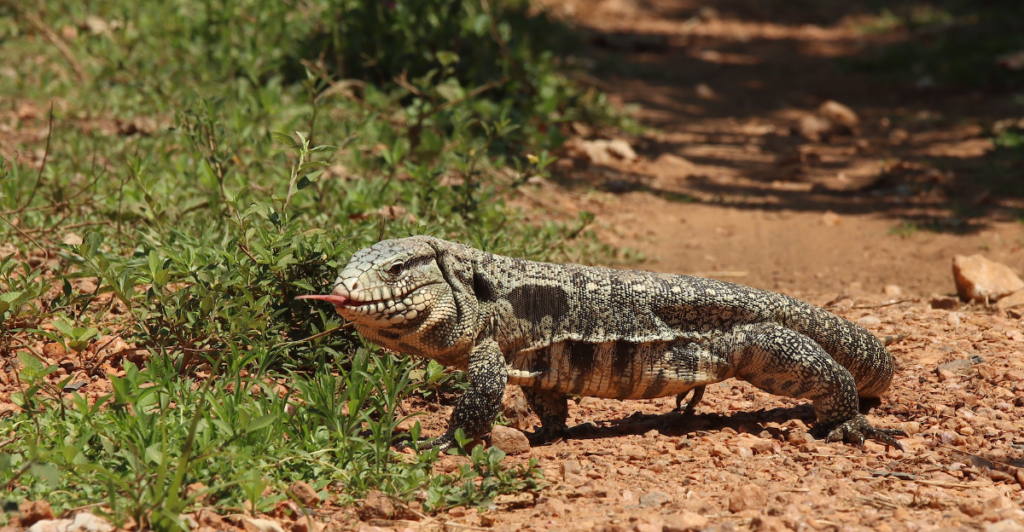
The Argentine black and white tegu is an invasive reptile wreaking havoc on local ecosystems. Tegus consume various prey, including native birds, reptiles, amphibians, mammals, and eggs, reducing native populations and disrupting the food chain. “Argentine black and white tegus are large lizards that can grow up to nearly five feet in length,” biologists explained. “They have a distinctive mottled black-and-white pattern, often arranged into bands across their back and tail.”
Tegus thrive in Florida’s warm, humid climate, and their adaptability allows them to spread rapidly. Because they have few natural predators in this environment, their populations can grow unchecked, causing significant damage to the environment around them.
How Did They Get Here?
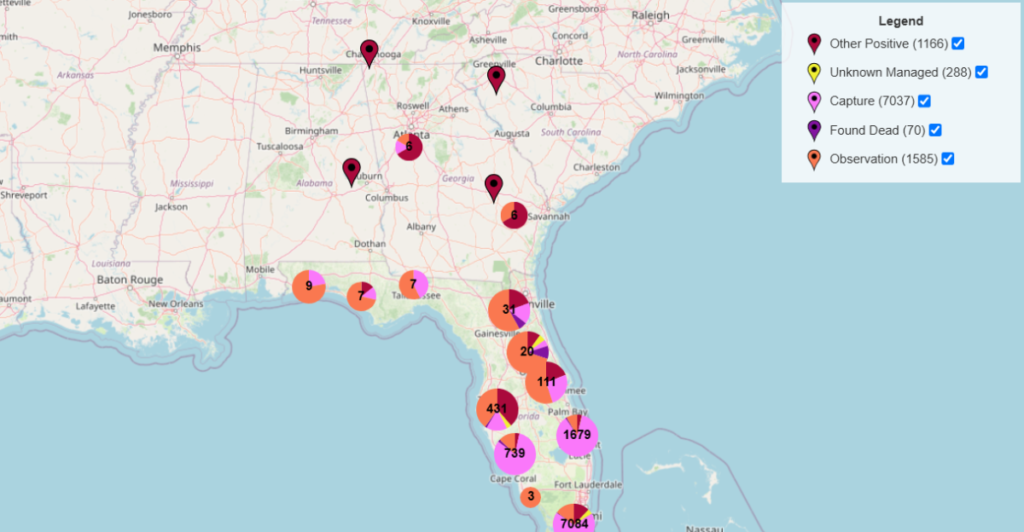
The Argentine black and white tegu’s presence in Florida can be traced back to the exotic pet trade. Native to South America, these lizards were imported into the United States as pets due to their manageable size and docile nature.
However, intentional releases and escapes from captivity have allowed them to establish breeding populations in Florida’s subtropical climate. The thriving pet trade and Florida’s disturbed habitats have created ideal conditions for these reptiles to spread rapidly across the state, posing significant ecological threats.
The Threat to Native Wildlife
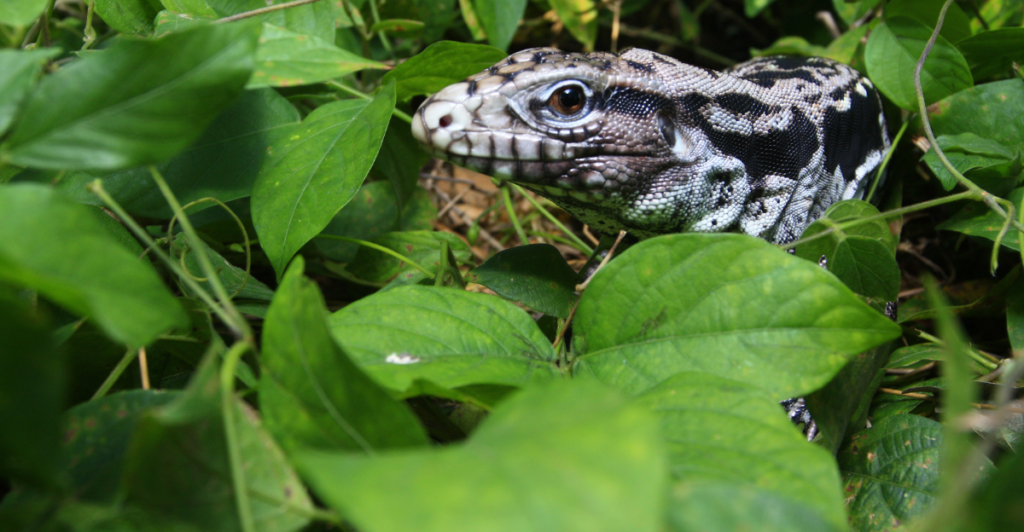
These opportunistic omnivores eat a wide range of prey, including the eggs of reptiles and ground-nesting birds, such as American crocodiles, sea turtles, and the Cape Sable seaside sparrow. They have also been documented preying on hatchlings of gopher tortoises and burrowing owls. This predation disrupts the reproductive success of these species, further endangering their populations.
The tegus compete with native predators for food and habitat, exacerbating ecological imbalances. Their presence in sensitive areas like the Everglades threatens ongoing restoration efforts and the delicate biodiversity of these ecosystems.
What Officials Are Saying
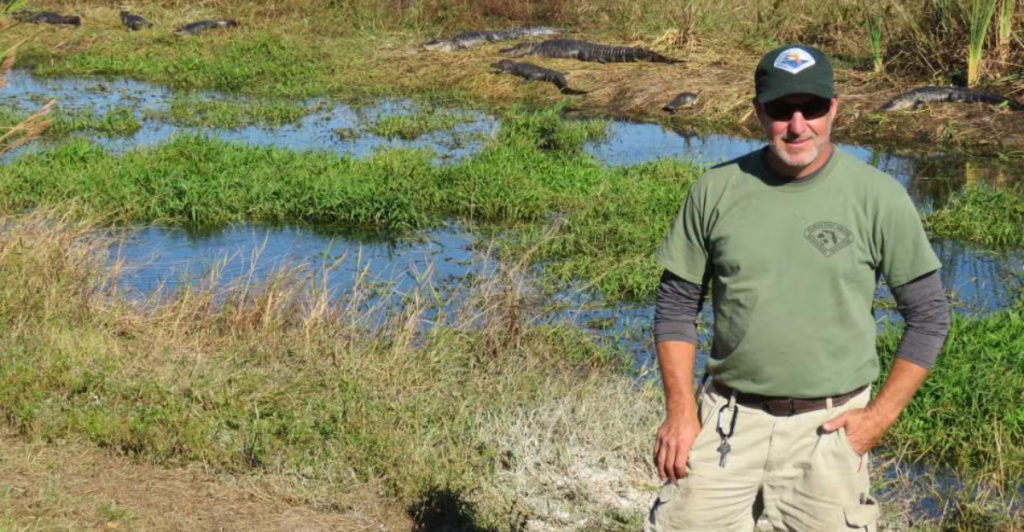
Officials are raising alarms about the rapid spread of Argentine black and white tegus across Florida, emphasizing the urgent need for coordinated action to curb their expansion. The Florida Fish and Wildlife Conservation Commission (FWC) has highlighted the ecological damage these invasive lizards can cause, including their predation on eggs of endangered species like sea turtles and gopher tortoises.
Researchers and wildlife managers stress that the tegu population could move beyond containment without sustained control efforts, resulting in costly long-term management. Collaborative initiatives, such as targeted trapping and public reporting via the FWC’s Exotic Species Hotline, are critical components of current strategies to mitigate their impact and prevent further ecological harm.
Efforts to Control the Invasion
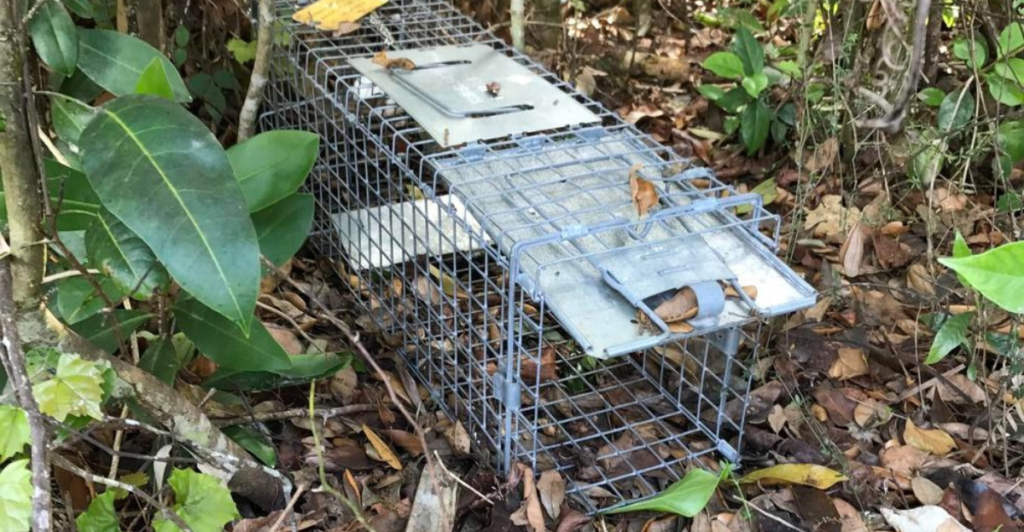
Efforts to control the Argentine black and white tegu invasion in Florida have been multifaceted, involving collaboration between several agencies, including the Florida Fish and Wildlife Conservation Commission (FWC), the University of Florida (UF), and federal organizations like the U.S. Fish and Wildlife Service. These initiatives include trapping, radio-tracking, and removal programs to reduce tegu populations in Miami-Dade and St. Lucie counties.
Public outreach campaigns encourage residents to report sightings through hotlines. At the same time, regulatory measures, such as adding tegus to Florida’s Prohibited Species List, aim to prevent further releases from the pet trade.
Public Awareness and Education
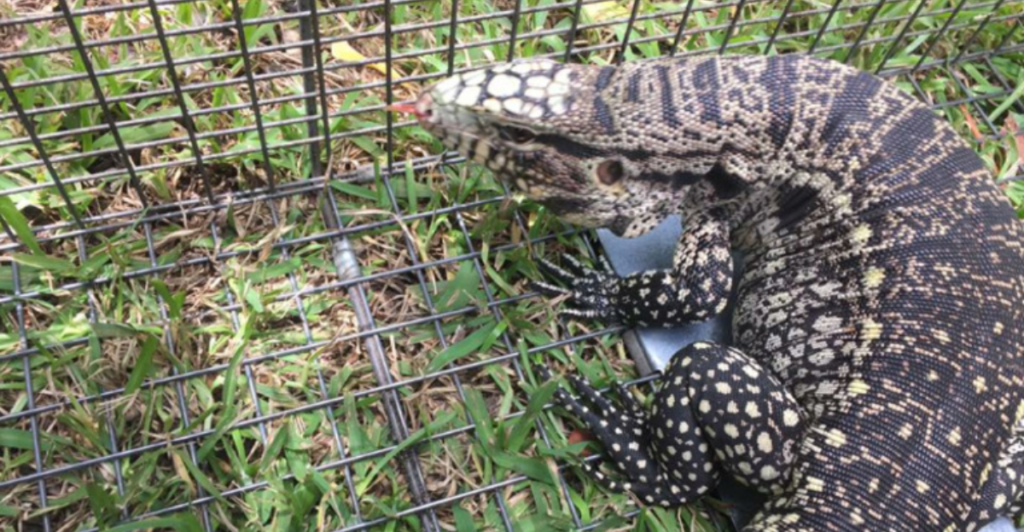
Public awareness and education are vital components in the fight against the Argentine black and white tegu invasion. Wildlife agencies and researchers have launched outreach campaigns to inform residents about the ecological risks of tegus and the importance of early detection. Public workshops, educational materials, and social media initiatives aim to teach people how to identify tegus and report sightings to authorities.
By engaging local communities, officials hope to prevent accidental releases, encourage responsible pet ownership, and foster collaboration in monitoring and controlling tegu populations.
How You Can Help

By reporting sightings through the Florida Fish and Wildlife Conservation Commission’s (FWC) Exotic Species Hotline or the IveGot1 app, you can help keep this species under control. If you encounter a tegu, avoid handling it and document its location with photos or videos to aid removal efforts. Educate others about the risks of releasing exotic pets and advocate for responsible ownership to prevent future introductions.
Support local conservation initiatives by volunteering with wildlife organizations or participating in community removal programs.
Economic Impact

This invasive species can have profound economic implications, especially in agriculture. Tegus consume crops such as fruits and vegetables, leading to direct losses for farmers. Their burrowing behavior can damage farmland infrastructure and irrigation systems, increasing maintenance costs.
The financial burden of controlling tegu populations is also substantial, as state agencies and conservation organizations invest heavily in trapping, monitoring, and removal programs. Without effective containment, the long-term costs of managing their spread could escalate, impacting local economies and broader restoration efforts in areas like the Everglades.
The Future of Florida’s Ecosystems
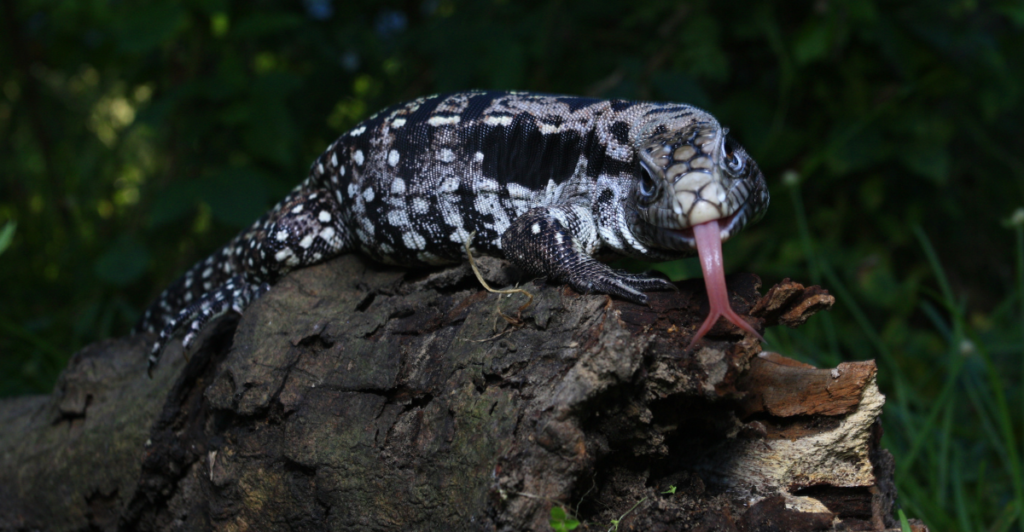
The future of Florida’s ecosystems hangs in the balance as the Argentine black and white tegu spreads across the state. Without intensified control efforts, these invasive lizards could potentially irreversibly alter Florida’s delicate ecological balance. Experts warn that if tegu populations continue to expand unchecked, they may move beyond the containment phase, necessitating costly long-term management strategies.
In the coming years, sustained multi-agency collaboration, increased funding for research and removal programs, and heightened public awareness will be crucial to safeguarding Florida’s unique biodiversity.
Explore more of our trending stories and hit Follow to keep them coming to your feed!

Don’t miss out on more stories like this! Hit the Follow button at the top of this article to stay updated with the latest news. Share your thoughts in the comments—we’d love to hear from you!







